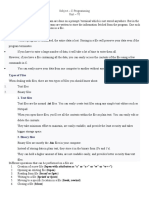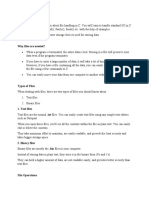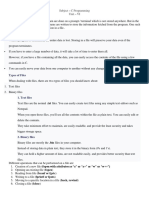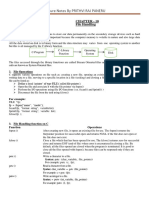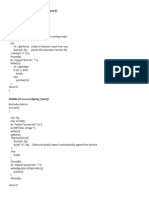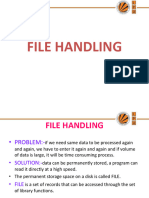0% found this document useful (0 votes)
6 views4 pagesPPS File Handling Answers
The document explains three directory methods in file handling: mkdir() for creating directories, opendir() and readdir() for opening and reading directory contents, and rmdir() for removing empty directories. It also distinguishes between text files, which are human-readable and stored in ASCII format, and binary files, which are machine-readable and stored in binary format, providing examples for each. Additionally, it includes a comparison table highlighting the differences between text and binary files.
Uploaded by
Aditya GawaliCopyright
© © All Rights Reserved
We take content rights seriously. If you suspect this is your content, claim it here.
Available Formats
Download as PDF, TXT or read online on Scribd
0% found this document useful (0 votes)
6 views4 pagesPPS File Handling Answers
The document explains three directory methods in file handling: mkdir() for creating directories, opendir() and readdir() for opening and reading directory contents, and rmdir() for removing empty directories. It also distinguishes between text files, which are human-readable and stored in ASCII format, and binary files, which are machine-readable and stored in binary format, providing examples for each. Additionally, it includes a comparison table highlighting the differences between text and binary files.
Uploaded by
Aditya GawaliCopyright
© © All Rights Reserved
We take content rights seriously. If you suspect this is your content, claim it here.
Available Formats
Download as PDF, TXT or read online on Scribd
/ 4

